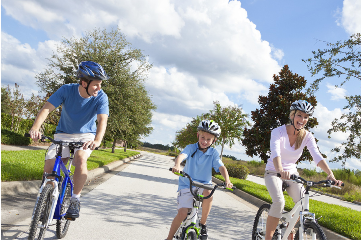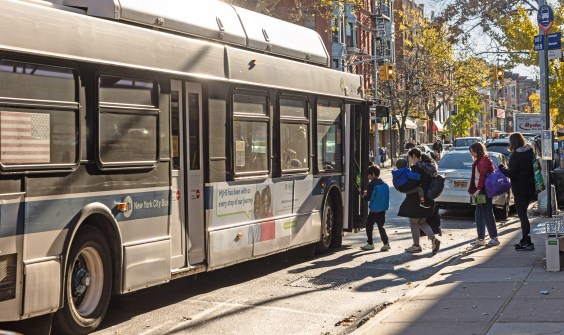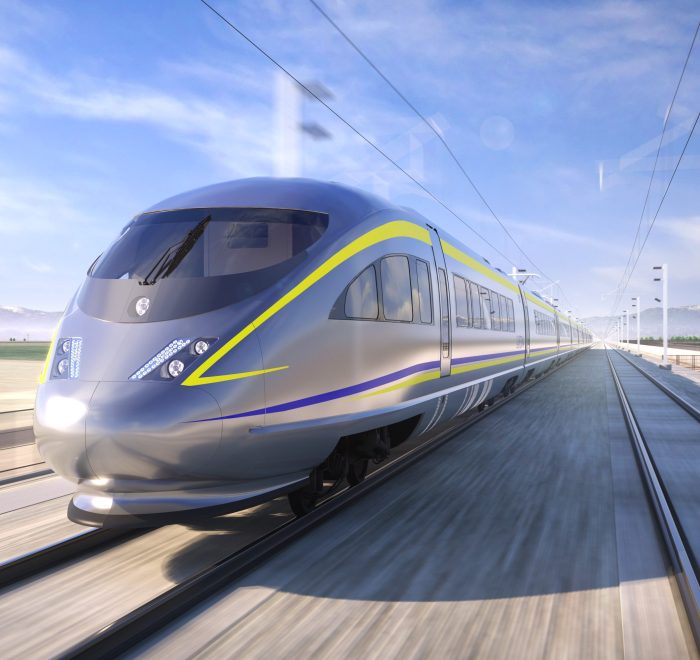Not exactly news, but yes: physical activity and exercise is necessary for good health. Plus, the way communities are built can help increase or decrease the amount of physical activity people get.
So sayeth a white paper recently posted by the California Air Resources board. As an official government statement of information, “Physical Activity: Health Benefits, the Role of the Built Environment and Impacts of Air Pollution” could be a key piece of policy decisions regarding a wide range of issues, perhaps starting with transportation funding.
Key findings in the paper are that physical activity brings huge health benefits including a significant drop in mortality risk, stronger bodies that suffer fewer injuries and can better fight off disease, and the prevention of a host of problems from obesity to cancer to depression—to name but a few.
This is far from new information, but clearly it bears repeating. A similar report just released in Minnesota, for example, found that biking in that state produced “millions of dollars in health care savings because of reduced obesity, diabetes and heart disease.”
The Minnesota report found that:
biking to work three times a week was associated with a 32 percent lower likelihood of obesity and 28 percent lower risk of high blood pressure — which produce substantial health savings and result in fewer premature deaths.
But California has put up roadblocks to people's health. Quite literally. In the name of “safety,” California continues to invest in wide roads that push pedestrians out of the way, making walking unpleasant and biking an activity too crazy to contemplate.
Meanwhile the wide roads encourage people to drive—because who would willingly walk along those congested roads? And who in their right mind would ride a bike?—which increases pollution from vehicles.
The ARB paper encourages physical activity because of its very clear health benefits, but acknowledges that being active in areas with polluted air could be bad, especially for people already suffering from exposure because they breathe that air all the time.
The report, however, concludes that “health benefits of outdoor physical activity outweigh the harms associated with increased exposure in areas with low to moderate air pollution,” although, as they say in academia, more research is needed.
It's asking a lot of people to put the onus on them to balance physical activity with bad air quality. The document offers a few guidelines to “minimize exposure to air pollution” that are at best Pollyanna-ish and at worse a slap in the face to people living in badly polluted areas:
When walking or biking, select low-traffic roads just a block or so off of major roadways.
That won't work in neighborhoods where these “low-traffic roads” don't connect, or don't go where people need to go, or expose you to other dangers like muggings.
Walk on sidewalk away from street curbs, closer to buildings.
Walk on side of street upwind from traffic.
Lick your finger and stick it up in the air!
Avoid exercising on summer afternoons when ozone pollution is highest.
Shift outdoor activity to a park environment when possible to reduce particle exposure.
In planning your route, take advantage of community designs, such as solid or vegetative barriers that separate cyclists and pedestrians from vehicle traffic.
The last two points reflect other findings in the white paper, that people with access to parks tend to be more physically active. And, it finds, so do people with access to public transit and safe walking and bicycling routes.
Who tend to produce less pollution because they don't need to drive a car for every last darn trip they make.
Communities decide together how to invest in themselves. California has tended to build parks and greenery in higher-income neighborhoods, not so much in low-income areas that are also most burdened by pollution. Those “safe” wide roads and highways that cater to people in cars are proving harmful to everyone, with only slightly less impact on those who can afford to drive to a gym with filtered air.
We know we need to walk more and drive less (or not at all), and not just to meet some high-falutin' climate change goals set in Sacramento, but because it's the only way we can get and stay healthy.
It's time to incorporate the findings in this official government white paper into decisions we make as a state about where and what kind of transportation investments we make, so we stop building the kinds of things that add to unhealthy life styles.
We've been doing it wrong, but here's a step towards helping us understand that we need to change the way we build our cities, towns, and roads so that people can move around on them, get healthier, and save us all a lot of grief.
A short fact sheet on the white paper is available here.





